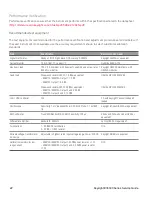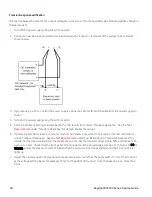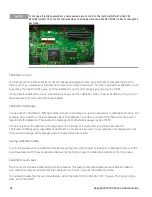
CC line regulation
1.
Turn off the power supply using the AC line switch.
2.
Connect the power supply output with a DMM, an electronic load and a current shunt. See
for details.
3.
Connect the AC power cord of the power supply to the AC power source.
4.
Turn on the power supply using the AC line switch.
5.
Program the output voltage and output current as described in the test record form under CC line regulation.
6.
Operate the electronic load in constant voltage mode and set its voltage to the power supply output value as
described the test record form under “CC Line Regulation”. See the
under Test Description
of “CC Line Regulation” for details. Check that the front panel CC annunciator of the power supply remains lit. If
it turns to
CV
or
UNREG
, adjust the load so that the output current drops slightly until the CC annunciator
lights up.
7.
Adjust the AC power source to low line voltage limit (90 VAC for nominal 100 VAC, 104 VAC for nominal 115
VAC, 194 VAC for nominal 215 VAC, or 207 VAC for nominal 230 VAC). Record the output current reading
(Ilowline) by dividing the voltage reading on the DMM by the resistance of the current monitoring resistor.
8.
Adjust the AC power source to high line voltage (110 VAC for nominal 100 VAC, 127 VAC for nominal 115 VAC,
237 VAC for nominal 215 VAC or 253 VAC for nominal 230 VAC). Record the current reading (Ihighline) again
immediately by dividing the voltage reading on the DMM by the resistance of the current monitoring resistor.
9.
Take the difference between the DMM readings in steps 7 and 8 is the CC line regulation (Ilowline – Ihighline).
The difference of the readings during the immediate change should be within the specification limits.
Keysight E36300 Series Service Guide
35













































